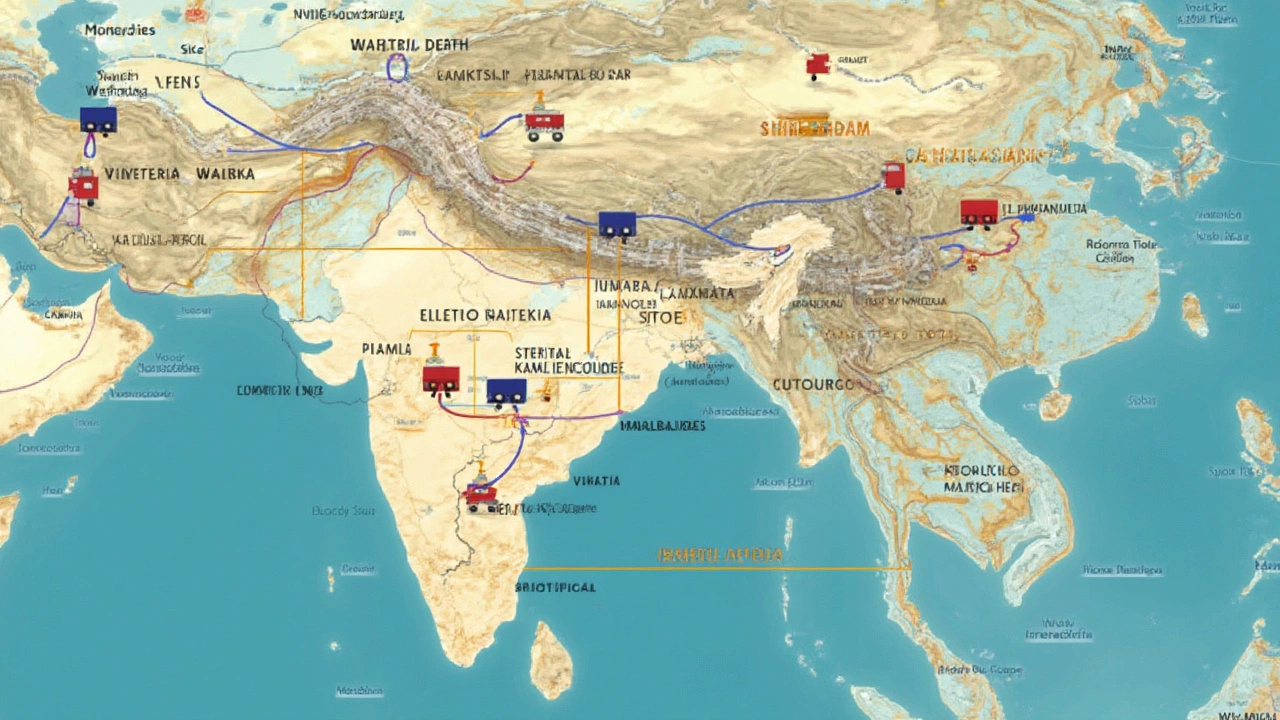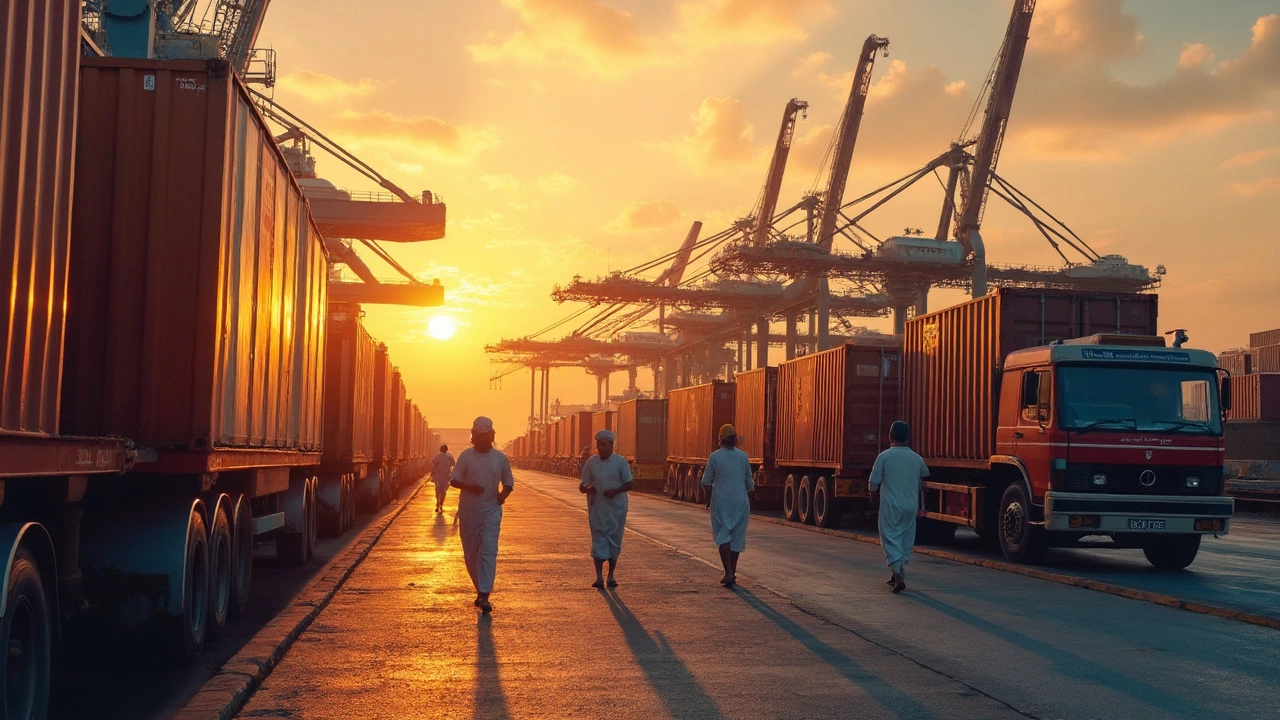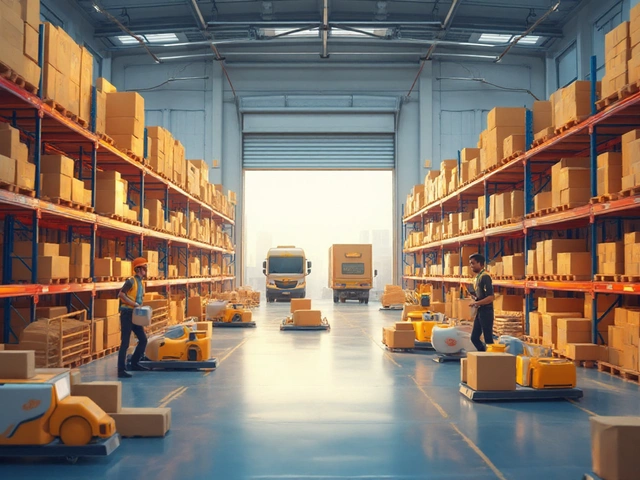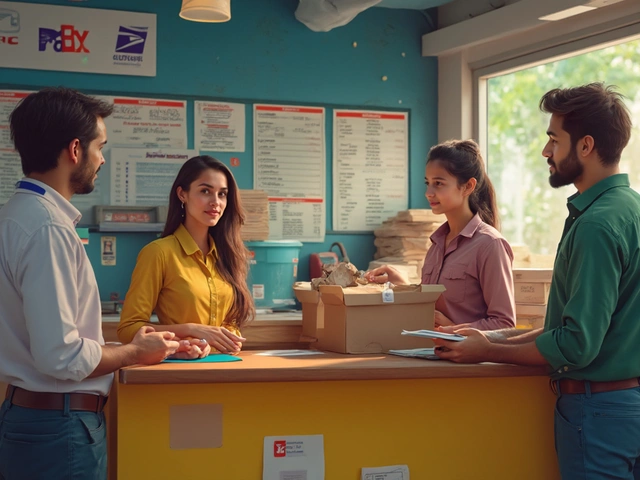Freight forwarding is like the unsung hero of the logistics world. It makes sure your goods get from point A to point B without you having to worry about a thing. But what exactly does it involve? Well, it starts with a deep understanding of global shipping regulations and best practices.
One of the main tasks is handling a ton of paperwork. We're talking customs declarations, bills of lading, and all those other documents that can make your head spin. A solid freight forwarder knows the ins and outs of this process, saving time and avoiding potential fines.
Another critical activity? Route planning. Forwarders don't just stick to one path; they look for the most efficient and cost-effective routes. This means considering different modes of transport, be it by sea, air, or road, and finding the perfect balance between speed and savings.
- Understanding Freight Forwarding
- Documentation Management
- Route Planning and Optimization
- Customs Clearance Assistance
- Warehousing and Storage Solutions
- Tips for Choosing the Right Freight Forwarder
Understanding Freight Forwarding
So, what exactly is freight forwarding? Well, at its core, it's all about managing the way goods are shipped from one place to another. It's not just about loading boxes onto a truck and waving goodbye. It's a whole puzzle of logistics that needs to be pieced together.
A freight forwarder acts like a conductor for an orchestra of moving parts. They coordinate shipping timelines, documentation, and routes, ensuring everything goes as planned. Without them, global trade would hit way more bumps in the road. The saying goes, "Freight forwarders are the architects of transport." This isn't just fluff; it's a real testament to their role.
"Freight forwarding is the backbone of our global economy, ensuring seamless connection between businesses and markets worldwide." - John Smith, Logistics Expert at Global Freight Solutions
Freight forwarding also means being a troubleshooter. Delays happen. Ports close. A good freight forwarder sees these problems coming and knows how to navigate through them. Here's a simple breakdown of what they do:
- Documentation Management: Ensuring all necessary documents are in order for smooth customs clearance.
- Mode of Transport Selection: Choosing the best transport method balancing speed and cost.
- Insurance Coordination: Handling cargo insurance to protect goods in transit.
- Tracking Shipments: Providing updates on the location and status of goods.
Oh, and let's not forget the term "multimodal transport." It means using more than one type of transport in a shipment. Like, when something goes by truck, then by ship. This offers flexibility and can sometimes be a cheaper option. According to a 2022 survey, about 60% of international shipments involve some form of multimodal logistics.
Understanding these basics helps businesses plan better and choose the right freight forwarding services tailored to their needs.
Documentation Management
Here's where it gets a bit technical but bear with me, it's crucial. In freight forwarding, managing the paperwork isn't just about checking boxes; it's the backbone of the operation. Good documentation can make or break a shipment.
Common Documents Handled
Your freight forwarder ensures correct completion and filing of vital documents such as:
- Bill of Lading (BOL): This is your cargo's deal on paper—acting as both shipment receipt and transport contract.
- Commercial Invoice: It's the bill for the goods and often required by customs.
- Packing List: Think of this as your cargo inventory. It details what exactly is in each shipment.
- Certificate of Origin: Proves where the product was manufactured, influencing tariffs and duties.
Why It Matters
Without proper documentation, your goods could be in limbo for weeks. Ever updated your phone and got stuck in an endless loop? That's what delays feel like for shippers. Having all necessary documents ready and accurate ensures your goods clear customs smoothly, saving tons of time and money.
Tips for Managing Documentation
- Start Early: Don’t wait until the last minute. Collect all necessary information as soon as possible.
- Stay Organized: Use digital solutions to keep everything in one spot; it’s like having a super-organized filing cabinet.
- Be Accurate: Ensure all details match across documents. Errors, even small ones, can lead to major hiccups.
Keeping tabs on all this might sound tedious, but trust me, when it comes to logistics and transportation, a little meticulousness goes a long way!
Route Planning and Optimization
When it comes to freight forwarding, route planning is like putting together a puzzle. You’re working with different pieces — location, time, cost, and transport mode — to get the best possible outcome. Efforts in this area can drastically cut delivery times and reduce costs.
Imagine a freight forwarder needing to move a shipment from New York to Berlin. They'd consider several factors: Is it faster by air, or cheaper by sea? Should they combine both? What are the traffic conditions, port charges, and potential weather disruptions?
Multimodal Transportation
This is where multimodal transport comes into play. Sometimes, using just one type of transportation isn’t the smartest move. Freight forwarders might opt for a combo, like a truck to the port, then a ship across the ocean, followed by a local delivery van. This mix-and-match approach helps achieve the perfect balance of speed and cost-efficiency.
- Air: Best for urgent or high-value goods. Costs more but gets it done fast.
- Sea: Great for bulky items, less expensive, takes longer.
- Rail: Reliable for land routes, especially over long distances.
- Road: Offers flexibility, perfect for short hops or door-to-door.
Technology in Route Planning
Tech has totally changed the game in recent years. Forwarders now use advanced software to predict and plan the most efficient routes. Algorithms crunch data from traffic reports, weather forecasts, and historical shipping trends.
Some even integrate with real-time tracking systems, letting businesses and customers alike follow shipments live. Ever get a 'package is 3 stops away' notification? That's this tech in action.
For companies playing the logistics game, keeping up with the latest route planning trends and technologies means staying competitive. The bottom line? A great freight forwarder understands there’s no one-size-fits-all solution and tailors their approach accordingly.

Customs Clearance Assistance
Customs clearance is probably one of the trickiest parts of international shipping, but that's where a freight forwarder really shines. They know the ropes when it comes to crossing borders with goods. So, what exactly do they do to make this process smoother?
First things first, they handle all the necessary documentation. It's like having someone who speaks the customs language fluently. Forwarders prepare and file the customs entries, and they make sure that everything from import permits to declarations is spot on.
Keeping Up with Regulations
Regulations can change more often than we check our social media. A freight forwarder stays updated with the latest rules, tariffs, and duty requirements. This means no nasty surprises in the form of unexpected fees or delays.
Paying Duties and Taxes
What's a package without duties and taxes, right? Freight forwarders handle the payment of applicable duties and taxes upfront. This ensures that your goods don't get stuck in customs limbo.
Troubleshooting Delays
Even with the best preps, things can hit a snag. Forwarders act as the first line of defense if there's a problem. They work directly with customs officials to resolve any hiccups, ensuring your shipment stays on course.
Here's a snapshot of the importance of customs assistance:
| Task | Benefit |
|---|---|
| Documentation Handling | Reduces errors and fines |
| Regulation Updates | Avoids compliance issues |
| Duties and Taxes Management | Streamlines payments |
| Problem Resolution | Minimizes delays |
Overall, having professional help with customs clearance is a game-changer for any business dealing with international shipments. It saves time, stress, and often money—allowing companies to focus on what they do best.
Warehousing and Storage Solutions
When it comes to freight forwarding, warehousing might not be the first thing that pops into your head, but it's a pretty critical piece of the puzzle. Think of it as the pit stop in the logistics journey where your cargo can rest, regroup, and get ready for the next leg.
Why Warehousing Matters
It's not just about storing goods. Effective warehousing helps in managing inventory, processing orders, and even serves as a hub for distribution. A reliable warehouse ensures the safe handling and proper shelving of goods, which reduces damage and loss. And let's not forget about maintaining optimal conditions for products that need it, like temperature control for perishables.
Types of Warehousing Options
Understanding your options can really make a difference in how you manage your supply chain. Here's a quick look at some common picks:
- Public Warehouses: Third-party owned, offering flexibility and scalability. Great if you have seasonal inventory fluctuations.
- Private Warehouses: Owned by big companies with steady storage needs. Offers more control but with higher overheads.
- Bonded Warehouses: Useful for storing imports before customs duties are paid. Convenient for international logistics.
Choosing the Right Solution
Here are some tips to navigate your choice of warehousing solutions:
- Consider the location. Proximity to major transport routes, such as ports or railroads, can cut down transit times.
- Think about the type of goods. Make sure the facility can accommodate any special needs your products might have.
- Technology is your friend. Look for warehouses equipped with advanced tracking and inventory systems for better efficiency.
Some Stats To Consider
Freight forwarders often see improvements in delivery times by up to 20% from optimized warehousing. Here's a breakdown to give you a sense of impact:
| Aspect | Improvement Percentage |
|---|---|
| Delivery Times | 20% |
| Inventory Accuracy | 30% |
| Cost Savings | 25% |
So, don't underestimate the power of warehousing in your supply chain game plan. It can be a real game changer for businesses getting their goods to the market just right.
Tips for Choosing the Right Freight Forwarder
Picking a freight forwarder is like choosing a trusted partner for your business. Get it right, and your shipments will glide through smoothly. But how do you make an informed choice? Here's what to consider:
1. Experience and Expertise
Always look for a forwarder with solid experience in your industry. They've probably handled similar challenges and can navigate specific regulations better.
2. Network and Reach
A robust global network means they can effectively manage shipments across various regions. Ask about their presence in key markets relevant to your business.
3. Range of Services
Make sure they offer a full suite of services that fit your needs—be it customs clearance, warehousing, or specialized transport.
4. Financial Stability
You don't want surprises mid-shipment because your forwarder faced financial issues. A quick check on their financial health can offer peace of mind.
5. Insurance and Safety Measures
Confirm they provide comprehensive insurance options and prioritize the safety of your goods during transit.
6. Customer Service
Service quality makes a big difference. A responsive team that keeps you updated can ease a lot of stress.
7. Competitive Pricing
While price shouldn't be the only factor, competitive rates help keep your costs down. Look for transparency in their pricing structure.
Here’s a quick snapshot of what matters most:
| Criteria | Importance |
|---|---|
| Experience | High |
| Global Network | High |
| Service Range | Medium |
| Financial Stability | High |
| Insurance | Medium |
| Customer Service | High |
| Pricing | Medium |
Finding the right freight forwarder takes some legwork, but it's worth it in the long run. A little research now could save you a lot of headaches later.





